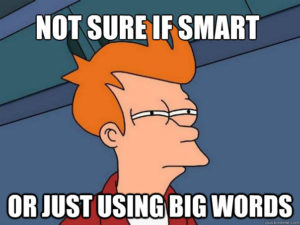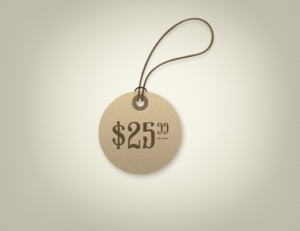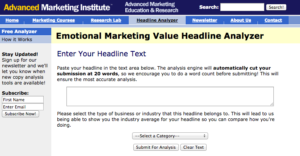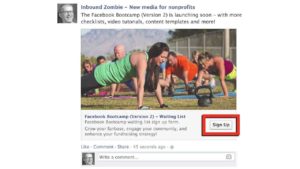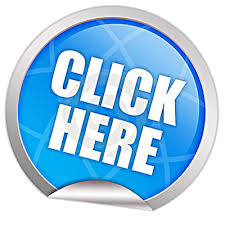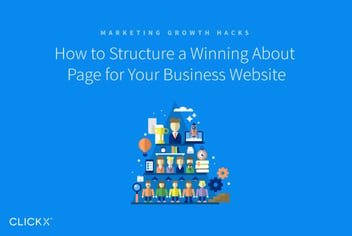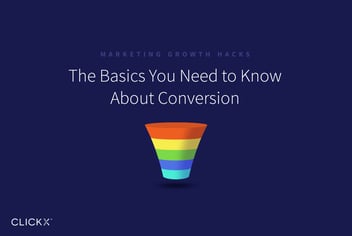24 Easy Copywriting Tweaks That Can Boost Your Sales Today
When it comes to marketing, there’s no need to reinvent the wheel in order to get astonishing results. The modern ‘greats’ of copywriting all take heavy cues from their successful predecessors; tweaking and optimizing what has already been proven to work exceptionally well.
This ‘recycling’ of tried and tested methodologies is something you should look to adopt for your own business. With that in mind, we’re going to introduce you to a number of highly effective copywriting tweaks that are all but guaranteed to boost conversions dramatically.
We’ve divided the 24 actionable steps below into the three categories that matter most in online marketing: your copy, your headlines and your Calls to Action (CTAs). Read through our tips, put our advice into action, then reap the rewards.

[Tweet “24 Easy Copywriting Tweaks That Can Boost Your Sales Today”]

Step 1: Tweaking Your Website Copy
1. Begin with the End in Mind

Know what you want to accomplish with your copy before you start writing it. It should always lead toward a CTA, but what will that be? Do you want readers to comment on your article, sign up for your newsletter, download a free ebook, buy your product or service, or something else? What is the ultimate end game of a visitor’s interaction with your website? Make sure you have these key questions answered before you take another step with your copywriting.
2. Use a Keyword
Focus your copy on an appropriate keyword phrase – something a reader might have typed into a search engine to land on your web page – but write naturally! Only use the keyword a few times, but be aware that it is your theme.
3. Use Keyword-Related Words
Use words that are contextually and/or semantically related to your keyword. For instance, if your main keyword phrase is ‘handwoven Latin American textiles’, you should use words the reader will expect and thus feel reassured by, such as ‘Mayan’, ‘colorful’, ‘backstrap loom’, ‘natural fibers’, ‘artisans’, etc.
4. Write to Your Target Customer
Know your customer(s). Write as if you’re speaking to an individual, and use the word ‘you’ so he or she understands that you are speaking to him and that the message is about him.
5. Use the Words Your Customers Use
Use the vernacular of your target customers. Connecting with your customers is much easier when you’re using the same vocabulary.
6. Know How Your Customers Talk About You
Read customer comments on your website and social media, talk to your customer support and sales staff, invite customer testimonials, and talk directly to customers who are receptive to giving you input. You can discover what they value about you, why they bought, and how they talk about you and your business.
7. Know How Your Target Customers Talk About Your Product and Similar Products
You can discover the words your target customers use to describe your product niche by exploring social media and reading comments they make in relevant blogs and online reviews. SocialMention.com is an aggregator of social media platforms that enables you to learn what people are saying about any topic in real-time: blogs, microblogs, bookmarks, images and videos. Topsy is another analysis website for user-generated content that enables you to search links, tweets, photos, videos and influencers.
8. Sell the Benefits Your Customers Say They Want
Don’t waste your time – and the reader’s time – talking about things your customers don’t value highly. Listen to your customers and only sell them what they want. Tell them about the benefits they care about and solve only the problem(s) they really want fixed.
9. Keep Your Writing Simple and Clear
Don’t use big words unless you have a very good reason. Use mostly short sentences – sentence fragments can even be good. Keep paragraphs short. Be clear, relevant and specific. Use a casual, personable voice. If your writing tends to be too formal, try recording yourself saying what you want to communicate as if you were speaking to your customer in person. This can be a solid base that you can write upon.
10. Tell the Reader What He Needs to Know to Accept Your CTA
Make sure your copy addresses all questions, objections and doubts a reader might have when considering whether to accept your CTA. Never make people click away from your presentation in order to get information that they will want to know in order to accept your CTA.
11. Head Off Objections
Tweak your copy to address objections before they become a problem. For instance, if you want readers to download a free eBook, and you think they may be concerned about having to read too much, assure them within your copy that it’s only 30 pages long.
12. Don’t Hide the Price
People really want to know how much your product or service is going to cost, so make sure the price is easy to find. However, don’t mention it until you’ve communicated the product’s value.
Step 2: Tweaking Your Headlines
Eighty percent of readers will never get past the average headline. It’s usually the first thing they see, and it must engage the reader and pull him forward into your copy if you have any chance of converting them. So follow these steps!
[Tweet “A whopping 80% of readers will never make it past your blog headline.”]
13. Write a Headline that’s Congruent with Your Copy
A lack of agreement between headline and text will disappoint (and send away) your visitors and imparts a whiff of insincerity and manipulation. Some experts say to write the headline first, some say to write it last. The advantage in the first case is that you get clear on what you want to write. The advantage in the second case is that you get clear on what you actually did write.
14. Use Proven Headline Techniques
Include the word ‘you’ in your headline if you can. Feature specific impressive data if you have some. Use the words ‘how to’, or ask a question to pique the reader’s curiosity and lead him into your page.
15. Use Emotion in Your Headline to Encourage Social Sharing
According to the Advanced Marketing Institute, emotional headlines get shared more on social media. AMI offers a free emotional marketing value headline analyzer to determine how compelling your headline is.
16. Use Sub-Headings to Keep Readers Reading
Sub-headings can expand on or help validate the premise of the headline and lead your reader further into the page. Make sure the subhead is larger, darker, or otherwise set off from the text that follows.
Step 3: Tweaking Your CTAs
A call to action is an invitation for the reader to take the next step to continue down the sales conversion funnel. It usually takes the form of a button, sign-up form or text link.
17. Place CTAs Where They Belong
Calls to action should appear after you’ve proven your value and have provided all information needed for the reader to make a decision to accept it. Don’t worry so much about whether the CTA is ‘above the fold’ or ‘below the fold’ – worry about convincing your visitors that they should take the intended action.
18. Don’t Ask for More Commitment than You Need
Make it easy for your reader to say ‘yes’. A button saying ‘Add to cart’ performs much better than one saying ‘Buy now’ because the customer is making a much lower level commitment. Instead of thinking he’s going to have to get out his credit card, he’s thinking, ‘I can always back out.’
19. Consider Using Your Email Address Instead of the Usual CTAs
Depending on your business and intentions, consider replacing CTAs with your email address. Some customers, in some cases, prefer to be undersold. Instead of clicking a button, they may want to communicate with you directly and talk things over.
20. Suit Your CTA to the Typical Reader
Consider where the typical reader who has arrived at your page is at in the sales conversion funnel and aim the CTA at him or her – and be sure that your CTA is an appropriate step for them to take. For instance, if most of your readers are new visitors, the CTA might be to download an ebook to educate them further. If your site has a lot of repeat visitors, you can use Smart CTAs to offer them different CTAs than you offer your new visitors.
21. Give Your Reader a Reason to Act Now
Readers are more likely to convert if you convince them that they need to do it now. Use words like ‘now’ and ‘today’ to encourage urgency. Your offer may be seasonal or available only for a limited time.
22. Make Your Button Copy Convey Value
The more valuable your button seems, the higher the conversion rate. An effective strategy is to use the word ‘Get’ to make it clear that the reader will acquire something. Don’t use the word ‘Order’, as that is something you have to do instead of something you’re going to get.
23. Don’t Use Proven Bad Words
Saying you won’t spam your subscribers has been shown to decrease conversion rates – because nobody likes seeing the word ‘spam’! Also, nobody wants to ‘submit’ to your button. Avoid hyperbole like ‘the best’ and ‘once in a lifetime’.
24. Use Proven Good Words
‘Click here’ is, surprisingly, still very effective. But if you use ‘Click here’ in your CTA, you shouldn’t use it for other links in your copy – the reader has one chance to ‘Click here’ and that’s it! Certain words have been shown to fairly reliably boost conversion rates: ‘Free’, ‘free trial’, ‘guarantee’, ‘money back guarantee’, and ‘discount’ all tend to work, as do ‘profit’, ‘get’, ‘instant access’, ‘new’, ‘secret’, and ‘you’.
Conclusion
Tweaking your copy for maximum conversions is both a science and an art, and many experts admit to being frequently mystified by the results they get, or don’t get – which is why they strongly recommend A/B testing to see what actually works, as opposed to what they think will work.
However, when you follow the best of what those in the know know to be so – adapting it to your unique circumstances and ever-changing times – you just may find yourself significantly ahead of the curve.
So what are you waiting for? Implement any (or all!) of the above steps and work towards higher conversion rates!


